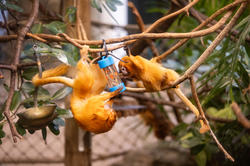Students enrolled in Design for Animal Enrichment are challenged to look beyond anthropocentric design to consider the needs of animals at the Roger Williams Park Zoo.
Industrial Design Students Use Family Recipes to Explore Product Development
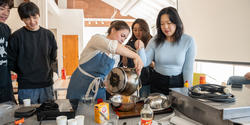
In a fall studio called Designing Food, Industrial Design students are exploring the process of product development through the lens of cooking. Taught by RISD faculty member Erica Pernice 14 ID, who says that food is her favorite medium because of its “material fluidity and ability to comfort, connect and educate,” the course examines how design fits within a culinary landscape.
“I love the engagement that food inspires compared to other types of design,” Pernice says. “Cooking is so much about listening and smelling and feeling.”
In addition to developing recipes and sharing them with the class, students are learning directly from industry experts—including a local beekeeper and an ice cream maker— as they explore the material, ecological, economic and interpersonal power of food product design. There are frequent group tastings throughout the semester that offer opportunities to consider feedback before the next round of iteration. The students are also meticulously documenting the experience and creating booklets for the final public tasting scheduled for early December.
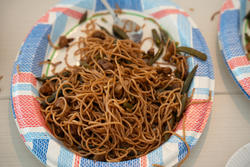
During the first tasting, students sampled milk pudding and Chinese-style noodles called Lu Mian. Pernice reminded the class to comment on both taste and texture. One student noted that the skin on the top of the pudding could be thinner, and others suggested alternative oils that could be used in the noodle dish to achieve a crispier texture.
“We have really lively critiques because food gets to the human side of human-centered design quickly,” Pernice says. “It makes for really wonderful feedback.”
Earlier in the semester, students learned the art of making honeycomb candy. They gathered around Pernice to watch as she made caramel, the base of the candy. She demonstrated by brushing away crystals building up on the sides of the pot as the sugar boiled. If a crystal falls into the batch of boiling sugar, the entire thing could crystallize, ultimately ruining the dish. As the caramel suddenly started to form, Pernice reminded the students that keeping an eye on the temperature and color is vital to the process.
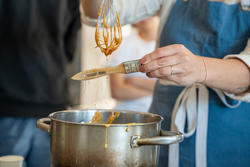
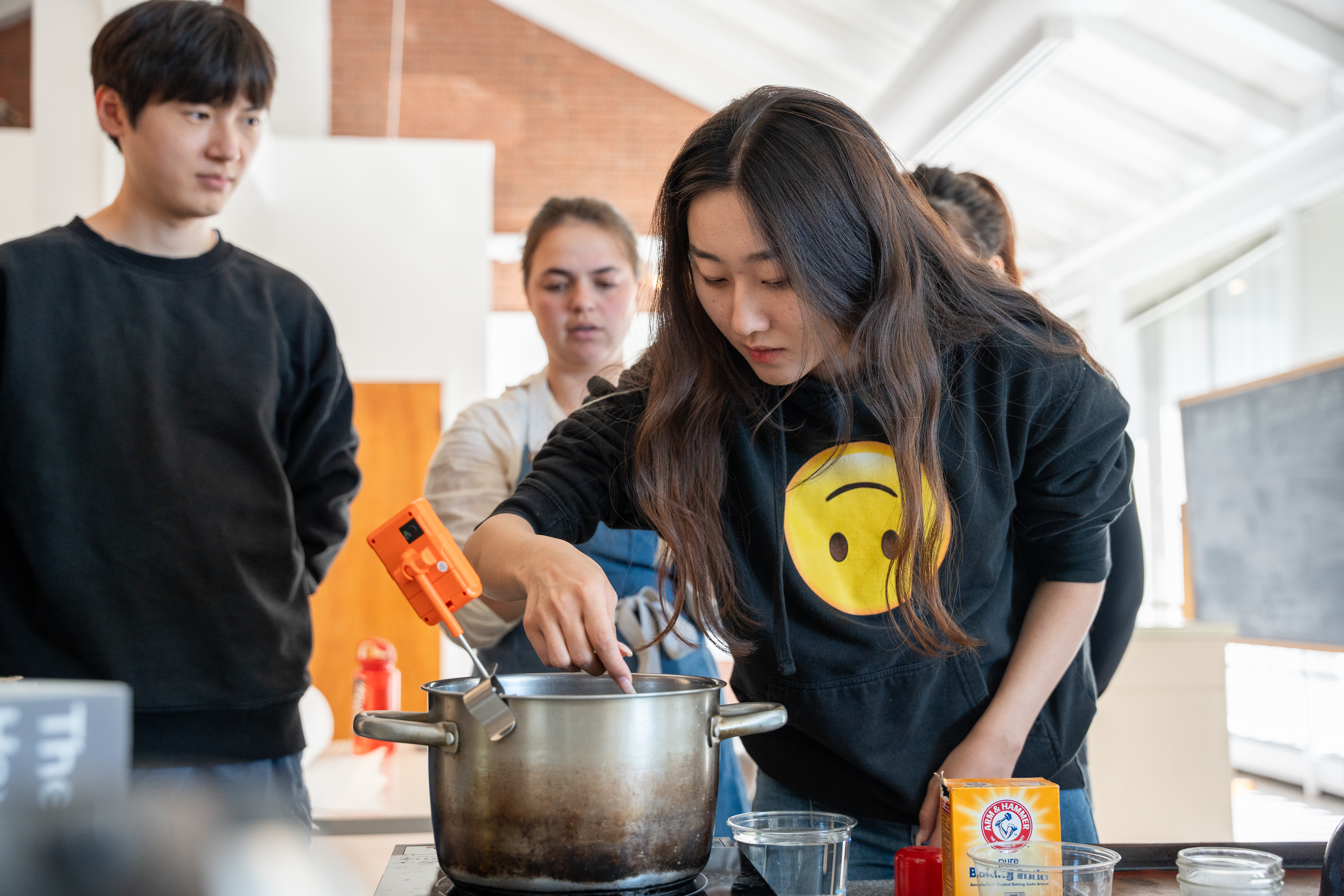
“Caramel is a lesson in patience,” she said. “It’s kind of beautiful. Caramel is the thing you don’t walk away from.” Once the caramel reached the right temperature—310 degrees Fahrenheit—Pernice poured it into a steel bowl and quickly pressed another bowl into it to set.
While the candy hardened, Pernice gave a presentation on waffles. She previously participated in product development for a waffle brand and shared insight into the process from start to finish. She asked the students to think about rituals related to eating, for example, an Oreo cookie. After a brief silence, someone shouted out “One bite!” and the room erupted in laughter. Another student said it’s important to have the right ratio of biscuit to cream in every bite.
As the semester continues, the students are perfecting form, formulation and process. The goal for them is to identify opportunities to create an impact within complex systems, practice thoughtful design to add value for consumers and learn hands-on skills for culinary product development.
“The typical product design process is the same in food design,” one student explains. “Iterate, critique, control one variable at a time and iterate again.”
Kaylee Pugliese
October 17, 2024
